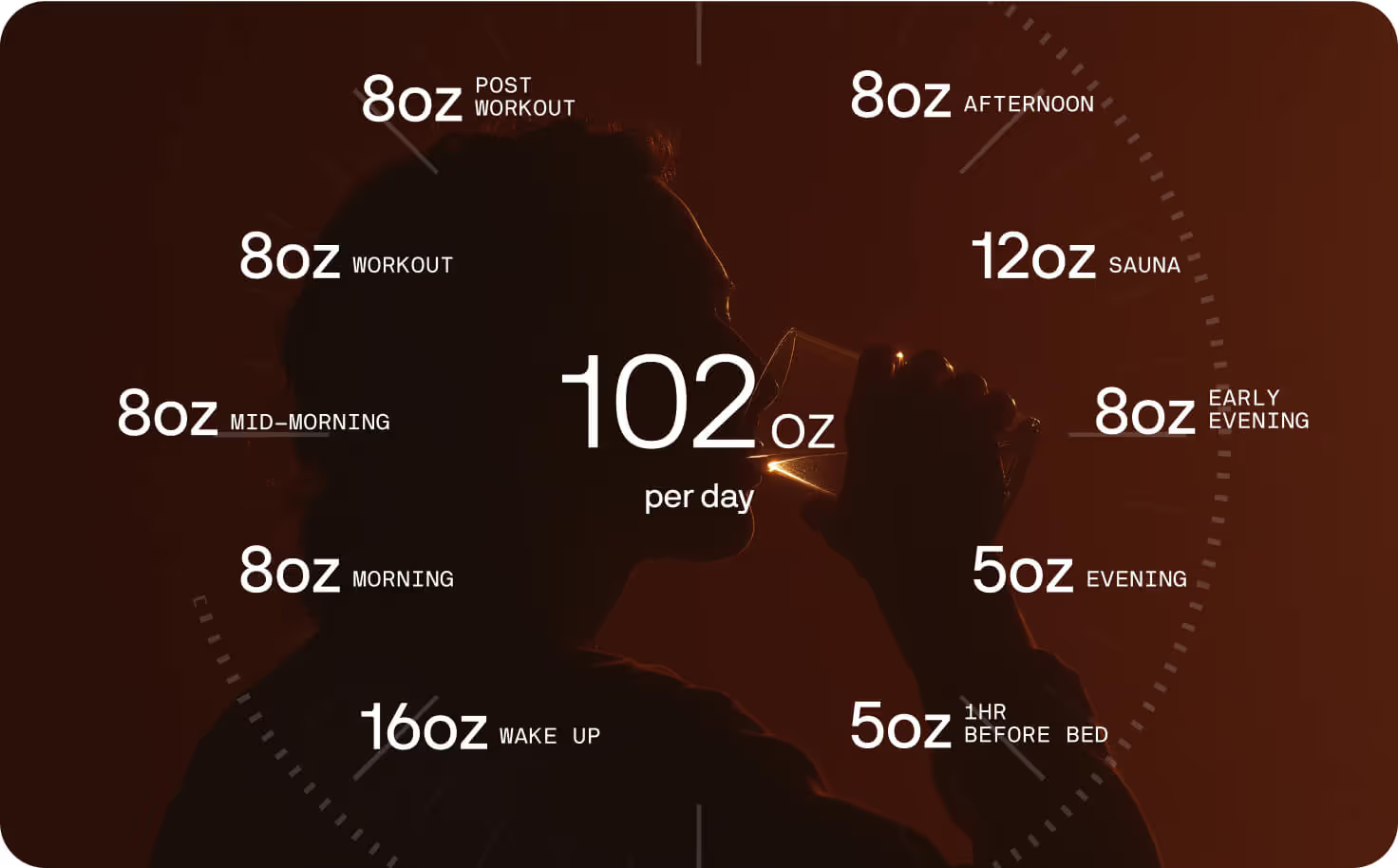What does your result mean?
This is your estimated daily water target.
If you are:
In range
Keep your daily routine. Sip steadily across the day and include electrolytes around long workouts.
Below range
You’re likely under-hydrated.
Add +0.4 to 0.8 L per hour of exercise, and aim for regular sips, for example 250 to 350 mL every 60 to 90 minutes.
Above range
Spread intake through the day. If you’re drinking much more than the range without electrolytes, watch for low-sodium symptoms during long efforts.
Targets are guides, not medical advice. Adjust if you feel bloated, light-headed, or wake to urinate at night.
How is this calculated?
Evidence baseline
Starts from widely used adequate-intake guidance (~3.7 L per day men, 2.7 L per day women), with ~20% typically coming from food.
Sized to you
We normalize by body size at ~30 to 35 mL per kg per day (≈ 0.5 to 0.6 fl oz per lb).
Activity adjustment
Most adults lose ~0.5–1.5 L of sweat per hour in moderate–hard training. We add ~0.4–0.8 L per exercise hour as a practical replacement.
Add additional water if you are in extreme heat, using the sauna or if your medication or specific diet requires.
Environment & day-to-day
Hot/humid days, heavy clothing, illness, and some meds can push needs ~10–20% higher.
Why a range?
Sweat rate and intake vary. We show a personalized range instead of one “perfect” number.
Backed by leading scientific literature:




.svg)



.png)